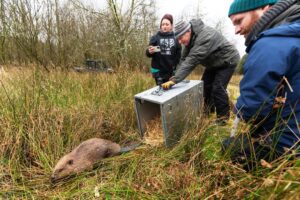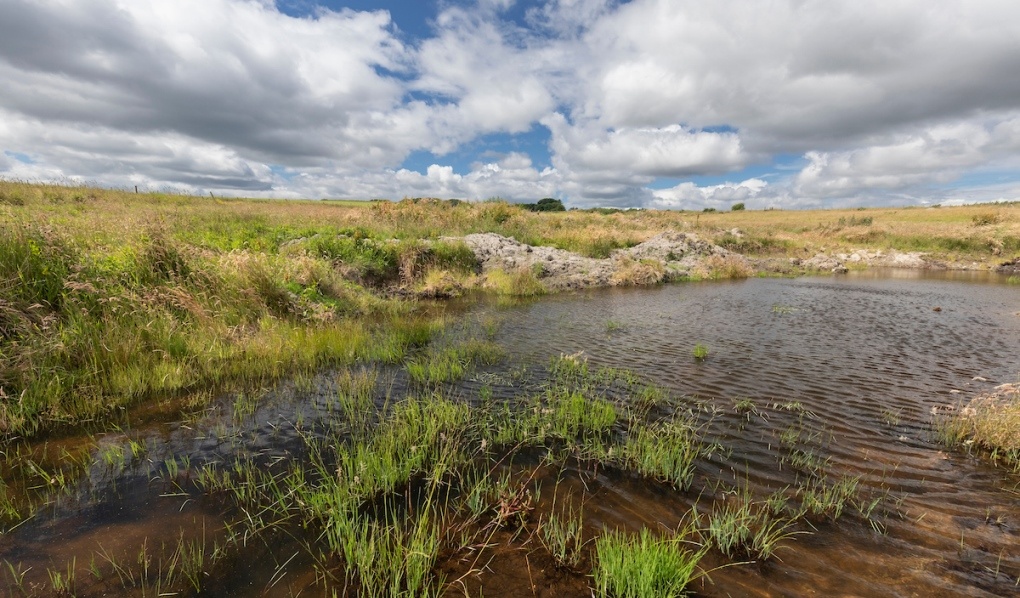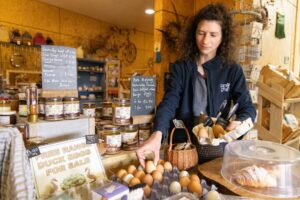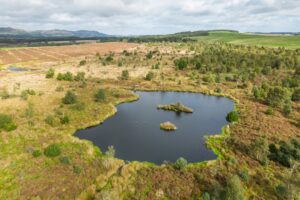In Scotland, a growing network of landholdings committed to rewilding has recorded dramatic ecological restoration and economic revitalization impacts in its first two years.
The Northwoods Rewilding Network, which has grown to 55 partners spanning the length and breadth of Scotland, has reported its first set of outcomes since it was established in April 2021 by rewilding charity SCOTLAND: The Big Picture.

Tom Bowser (owner) releasing adult female beaver at Argaty Red Kite Centre, the first translocation within Scotland, Lerrocks Farm, Doune, Scotland, 29th Nov 2021
More than 4100 of the trees are along rivers, where they are particularly impactful, providing shade, shelter and nutrients to a food web that includes Scotland’s iconic Atlantic salmon.
Sixty-nine new ponds and ‘scrapes’ – shallow, seasonal pools – have been created, providing 15,000 square meters of wetland habitat, while the removal of field drains has created more than 8,000 square meters of additional seasonally flooded habitat.
A total of 60 hectares of degraded peatland has been restored – capturing carbon and reducing the impact of flooding and drought.
New hedgerows have been planted by more than a third of the network’s partners, amounting to nine kilometers, while the same length of redundant fencing has been removed – helping to open up wildlife highways.
Seventeen partners have created or restored grassland habitat, covering a total of 276 hectares, and a similar number are employing natural grazing using 128 semi-wild cattle.
The ecological interventions have brought substantial economic benefits, too.More than £1 million ($1.2 million USD) has been spent with local suppliers and services since the launch of Northwoods, which stretches from the Solway Firth to Sutherland, and from the East Neuk of Fife to the Ross of Mull.
The network presently supports 71 full-time-equivalent jobs for people employed in nature-related enterprises.
James Nairne, Northwoods Project Lead at SCOTLAND: The Big Picture, said “These impressive impacts demonstrate the commitment of our Northwoods partners to deliver benefits for nature and communities. We believe that working with a diverse range of land managers to create nature networks across Scotland is the most effective way of tackling biodiversity loss and climate breakdown.”
Nature is thriving across the network. Ospreys, red kites and white-tailed eagles are seen at more than a third of the sites, while otters are present at more than half.
Three-quarters of the network partners are reporting “vegetation succession” – where the mix of species and habitat changes over time as natural processes recover.
The rewilding activities are bringing in people too – 236,000 visitors have been recorded across the network, and 137 nature-related visitor events have been hosted, while 532 volunteers have engaged with partner projects.
Gavin Drummond and Laura Hay are the owners of Harestone Moss, near Aberdeen, a site that was farmed for livestock for many decades. They joined the Northwoods Rewilding Network in May of 2022.Drummond says, “Rewilding does not have to mean turning our back on other land uses, but is a way to create biodiverse ecosystems alongside other activities.”
“Our new saying here is ‘just add water’ – everybody is amazed at the transformative effect of our ponds, which have been created just by stopping water draining away,” he concluded.
Landholdings in the network include farms, crofts, community woodlands and private estates, and the network’s partners are the owners, managers or trustees of the sites. The size of partner sites ranges from 50 to 1,000 acres.
Each Northwoods partner makes rewilding commitments tailored to its site and circumstances.
SCOTLAND: The Big Picture helps partners to identify rewilding opportunities and sources of funding to carry them out, as well as showcasing the stories of those who make rewilding work for nature, for climate and for people.



